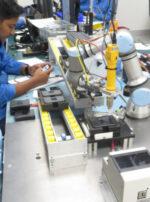Exponential Manufacturing Revolution
Diane Francis Member of Advisory Council at Hudson Institute Kleptocracy Initiative The train to Boston from New York speeds past stunning scenery as well as the blight of abandoned factories, scarred with graffiti. These empty buildings are the remnants of a New England that was the China of the Industrial Revolution based on cheap immigrant labour. Today, its towns languish economically, except for Boston, which is enjoying a resurgence as a technology, pharma, and advanced manufacturing hub. This week, American experts from industry, technology, and policy gathered at a conference in Boston, curated by Singularity University, to discuss the role of tech in manufacturing. America remains a manufacturing powerhouse, as well as the world’s pre-eminent technology nation, but marrying the two will take time. In global terms, the industrial sector represents one-third of all global economic output and represents half of the world’s energy consumption and renewables. “This year, offshore wind power generation matched the cost of natural gas power plants in Europe,” said Singularity’s energy expert Ramez Naam. “In windy parts of the world, wind power is cheapest, and in sunny parts of the world solar is.” In solar, record low prices were reached this year too. A major contract in Dubai at 2.91 U.S. cents per kilowatt hour, the world’s lowest — Ontario’s prices average 8 cents per kilowatt hour. India just completed the world’s largest solar farm (4.5 U.S. cents per kilowatt hour) and its federal government intends to have only electrically-powered vehicles by 2030 – completely bypassing fossil fuels. As these industries scale, costs plummet for solar panels and turbines. China is converting to renewables rapidly, but has also earmarked half a trillion dollars to become the world’s advanced manufacturing leader. This is a major pivot, necessary in light of the fact that cheap labour, […]







